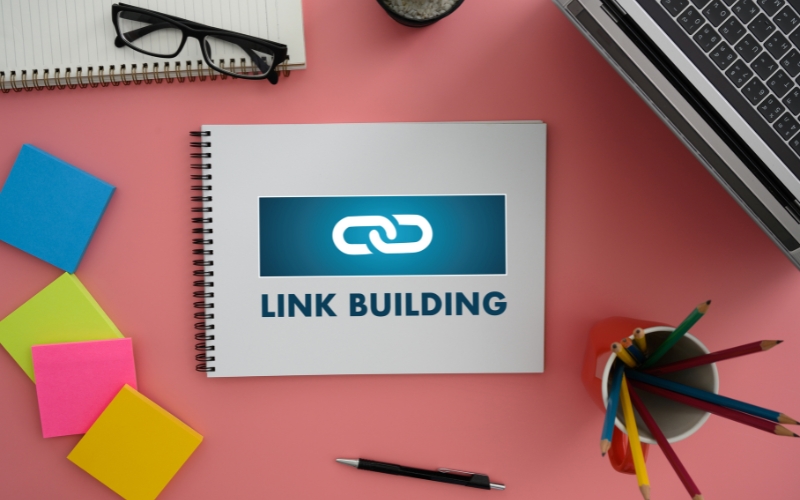
In the fast-paced world of e-commerce, e-commerce SEO is essential for gaining visibility and attracting customers. As online competition intensifies, it is crucial for e-commerce websites to implement effective SEO strategies to rank higher in search results and drive organic traffic. The foundations of e-commerce SEO lie in understanding key concepts like keyword research, on-page optimization, and creating a user-friendly site architecture. In this article, we will explore these fundamental strategies that are vital for achieving a successful e-commerce SEO campaign and staying ahead in the competitive market.
Understanding E-Commerce SEO Fundamentals

When it comes to running a successful e-commerce business, e-commerce SEO is a critical component in driving organic traffic and ensuring visibility in search engine results. At its core, e-commerce SEO involves optimizing your online store for both search engines and users to improve rankings, increase traffic, and ultimately boost conversions. Below are some fundamental strategies that every e-commerce website should focus on to maximize SEO efforts.
Keyword Research is the foundation of any successful e-commerce SEO strategy. Identifying the right keywords allows you to target what your potential customers are searching for. This includes both broad keywords (like “buy shoes online”) and long-tail keywords (like “best running shoes for flat feet”). By using tools like Google Keyword Planner, Ahrefs, or SEMrush, you can find high-volume, low-competition keywords that are most likely to drive relevant traffic to your site. Once you have a solid keyword strategy, incorporate them naturally into your product pages, category pages, and blog content.
On-Page Optimization is equally crucial for e-commerce websites. Each product page should be optimized for the right keywords, with well-crafted product descriptions that inform and persuade. These descriptions should not only include relevant keywords but also focus on providing value to customers by addressing their needs and concerns. Title tags and meta descriptions should also be optimized, as these elements directly impact your website’s click-through rate (CTR) from search engine results pages (SERPs). Make sure the title tags are concise yet descriptive, and meta descriptions should encourage users to click through to your page.
Another important aspect of e-commerce SEO is optimizing the site architecture. A well-structured site ensures that search engines can easily crawl and index your content. Organize your products into logical categories, and make use of internal links to create a user-friendly navigation system. This structure not only helps search engines understand your site better but also provides a seamless experience for users, which is essential for both ranking and conversion rates. Additionally, having a clean, fast-loading site is crucial for retaining visitors and improving SEO performance.
To sum up, e-commerce SEO fundamentals such as thorough keyword research, on-page optimization, and a solid site architecture are essential for improving visibility and driving traffic in competitive markets. Implementing these strategies will lay a strong foundation for your e-commerce site to rank higher in search results and ultimately lead to increased sales.
The Power of Technical SEO for E-Commerce Websites

In the highly competitive world of e-commerce, e-commerce SEO extends far beyond keyword optimization and on-page content. One of the most powerful aspects of e-commerce SEO is technical SEO, which focuses on the backend elements that influence website performance, user experience, and search engine rankings. Optimizing the technical side of your website is essential for improving speed, accessibility, and how easily search engines can crawl and index your pages.
Website speed plays a crucial role in both user experience and search engine rankings. Slow-loading websites not only frustrate users but also increase bounce rates, which negatively impact conversion rates. Search engines, including Google, consider page speed as a ranking factor, meaning that slow sites are less likely to appear in top positions. To enhance your e-commerce SEO, it’s essential to optimize images, minimize HTTP requests, leverage browser caching, and use content delivery networks (CDNs) to improve the overall loading speed of your site. Fast loading times contribute to better user satisfaction and increased chances of ranking higher in search results.
Mobile-friendliness is another critical element of technical SEO for e-commerce websites. With a significant portion of online shopping now taking place on mobile devices, Google has made mobile-first indexing a priority. This means that Google predominantly uses the mobile version of your site for ranking and indexing. Ensuring that your e-commerce site is fully responsive and optimized for mobile is crucial for achieving strong e-commerce SEO results. This includes using mobile-friendly design elements such as easily clickable buttons, readable text without zooming, and seamless navigation that adapts well across different screen sizes.
Structured data (or schema markup) enhances the way search engines understand and display your content. For e-commerce websites, structured data can provide valuable details about your products, such as prices, availability, and reviews, directly in search results. By implementing structured data, you give search engines more context about your products, making it easier for them to showcase relevant information in rich snippets, which can significantly improve your visibility in search engine results. This contributes to higher click-through rates and provides users with more useful information before they even visit your site, all of which enhance e-commerce SEO performance.
Optimizing Product Pages for Maximum Conversions

In the competitive world of e-commerce, e-commerce SEO is not just about getting visitors to your site; it’s about converting those visitors into loyal customers. One of the most crucial elements in achieving this is optimizing your product pages. An effective product page should be well-optimized for both search engines and potential customers, ensuring it ranks highly in search results and provides all the information needed to drive conversions.
Detailed Product Descriptions are essential for both SEO and customer satisfaction. A good product description provides detailed, accurate, and helpful information about the product, including features, benefits, and usage instructions. By incorporating relevant keywords naturally, you can improve the page’s chances of ranking higher in search results, making it easier for potential customers to find. However, the description should also be written with the customer in mind, addressing their pain points and answering common questions. The goal is to not only rank well in search engines through e-commerce SEO but to also make the page compelling enough to prompt a purchase.
Another critical aspect of product page optimization is high-quality images. In an online store, where customers can’t physically interact with the products, high-quality images are essential for showing off the details of what you’re selling. Multiple images from different angles, zoom functionality, and lifestyle photos can all help improve the user experience. High-quality images encourage trust, reduce the likelihood of returns, and help increase conversions. By using descriptive file names and alt text, you can also leverage these images for additional SEO benefits.
User-generated content in the form of reviews is another valuable tool for improving e-commerce SEO and boosting conversions. Positive reviews not only provide social proof, helping to build trust with potential customers, but they also contribute fresh, keyword-rich content that can enhance the page’s SEO. Encouraging reviews and testimonials on product pages can increase engagement, improve rankings, and ultimately drive sales. Moreover, reviews can answer common questions customers may have, reducing uncertainty and facilitating quicker purchasing decisions.
Lastly, don’t forget to include clear calls-to-action (CTAs). A well-designed CTA guides users to take the next step, whether it’s adding a product to the cart, signing up for more information, or completing a purchase. Ensure that the CTA is prominent, actionable, and easy to find on the page.
Leveraging Content Marketing to Outrank Competitors

In today’s competitive e-commerce landscape, e-commerce SEO requires more than just optimizing product pages and technical aspects of your site. Content marketing plays a pivotal role in driving organic traffic, enhancing brand visibility, and building trust with your target audience. By creating valuable and engaging content, e-commerce businesses can not only improve their search engine rankings but also stand out from competitors and connect with potential customers in meaningful ways.
Blogs, buyer guides, and product reviews are powerful tools in content marketing that can significantly boost your e-commerce SEO efforts. Regularly publishing informative, keyword-rich blog posts provides search engines with fresh content, helping your site rank for a wider range of relevant keywords. For example, writing a blog post like “How to Choose the Best Running Shoes for Your Feet” allows you to target long-tail keywords that your competitors might not be focusing on. This not only helps improve your rankings but also brings in a more targeted audience looking for valuable information related to your products.
Buyer guides and tutorials are also crucial for driving traffic and increasing conversions. Comprehensive guides that explain how to use products or highlight their benefits can provide immense value to users. These resources not only help answer customers’ questions but also establish your authority in the market. For example, a detailed guide on “How to Set Up Your New Coffee Machine” or “A Step-by-Step Guide to Organizing Your Closet” can attract users who are in the decision-making process, ultimately driving them closer to a purchase. Such content not only boosts e-commerce SEO by ranking for niche keywords but also encourages users to spend more time on your site, reducing bounce rates and improving your overall SEO performance.
Video content is another powerful tool in e-commerce SEO that can help you outrank competitors. Videos are highly engaging and can be optimized with relevant keywords in titles, descriptions, and tags. Product demos, how-to videos, or customer testimonials can increase user engagement and provide valuable content that resonates with your audience. Video content is often shared more widely, which can lead to increased brand awareness and backlinks from other reputable websites, both of which can improve your search engine rankings.
Building a Strong Link-Building Strategy in Competitive Markets

In the world of e-commerce SEO, building a strong link-building strategy is crucial for gaining visibility in highly competitive markets. Backlinks, or inbound links from other websites, act as endorsements, signaling to search engines that your site is reputable and authoritative. Acquiring high-quality backlinks is one of the most effective ways to improve your website’s rankings and drive more organic traffic. In competitive industries, having a robust link-building strategy can set your e-commerce business apart from the competition and ensure better search engine performance.
Outreach is one of the most effective strategies for acquiring backlinks in a competitive market. By reaching out to other authoritative websites, bloggers, or influencers within your niche, you can request a backlink in exchange for valuable content, guest posts, or product reviews. For example, if you sell eco-friendly products, you could reach out to eco-conscious bloggers to feature your products in their content, providing a link back to your website. This type of targeted outreach helps establish your brand as an expert in your field while improving your e-commerce SEO through valuable backlinks.
Partnerships also play an important role in link-building. Collaborating with other businesses, especially those in related industries but not direct competitors, can provide opportunities for mutual backlinking. For instance, a fashion e-commerce site could partner with a beauty brand to create content that links to both websites. These partnerships can lead to quality backlinks from reputable sources, boosting your e-commerce SEO efforts and expanding your audience reach.
Guest blogging is another effective strategy to build quality backlinks. By contributing guest posts to well-established websites within your niche, you can include a link back to your e-commerce site. Guest blogging provides valuable content to readers while giving you exposure to a wider audience. It also establishes your authority in the industry, which can positively impact your e-commerce SEO rankings. Be sure to write high-quality, informative posts that are relevant to the website’s audience and include strategic keywords related to your products.
Finally, it’s important to focus on acquiring quality backlinks, not just quantity. Backlinks from high-authority websites in your industry carry more weight than links from less reputable sources. By focusing on building meaningful relationships, offering valuable content, and leveraging partnerships, you can create a strong link-building strategy that enhances your e-commerce SEO and helps you outrank your competition in search results.
Conclusion:
To further enhance your understanding of e-commerce SEO and the strategies necessary to succeed in competitive markets, consider exploring expert insights from Moz’s Beginner’s Guide to SEO. This comprehensive guide offers valuable tips on everything from keyword research to technical SEO, helping you develop a solid foundation for optimizing your e-commerce website. By leveraging resources like this, you can refine your SEO strategy and stay ahead in the highly competitive online marketplace.
To succeed in a competitive e-commerce market, a strong focus on e-commerce SEO is necessary to not only improve rankings but also increase conversions and drive sustained traffic. By optimizing your website with thorough keyword research, well-crafted product pages, and a solid technical structure, you can create an online store that appeals to both search engines and customers. Consistently implementing these e-commerce SEO fundamentals will establish a strong online presence, allowing your business to outperform competitors and boost sales over time.
For more details or to discuss your specific SEO requirements, visit our Onsite SEO Services page.

